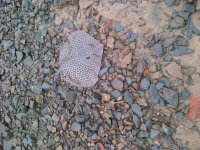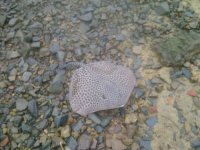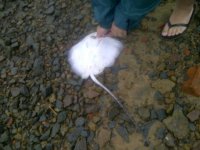claireturner
New member
Went to blue lagoon in durban this morning but cut it short due to heavy rain. Anyway, I never caught anything but my friend managed to catch a leopard stingray, he wasn't very big but really awesome looking little thing. We managed to get him safely back into the water and he swam off.
Anyway, when we got him out the water we didn't know what he was, we knew he was some type of ray, but weren't to sure whether he was dangerous and so we had no clue how to handle him as neither of us have ever caught a ray.
So my question is, can anyone please explain to me how to handle a stingray when taking the hook out and returning it safely to the water without causing harm to myself as well as the ray.
Here's some pics of the little guy
Anyway, when we got him out the water we didn't know what he was, we knew he was some type of ray, but weren't to sure whether he was dangerous and so we had no clue how to handle him as neither of us have ever caught a ray.
So my question is, can anyone please explain to me how to handle a stingray when taking the hook out and returning it safely to the water without causing harm to myself as well as the ray.
Here's some pics of the little guy



